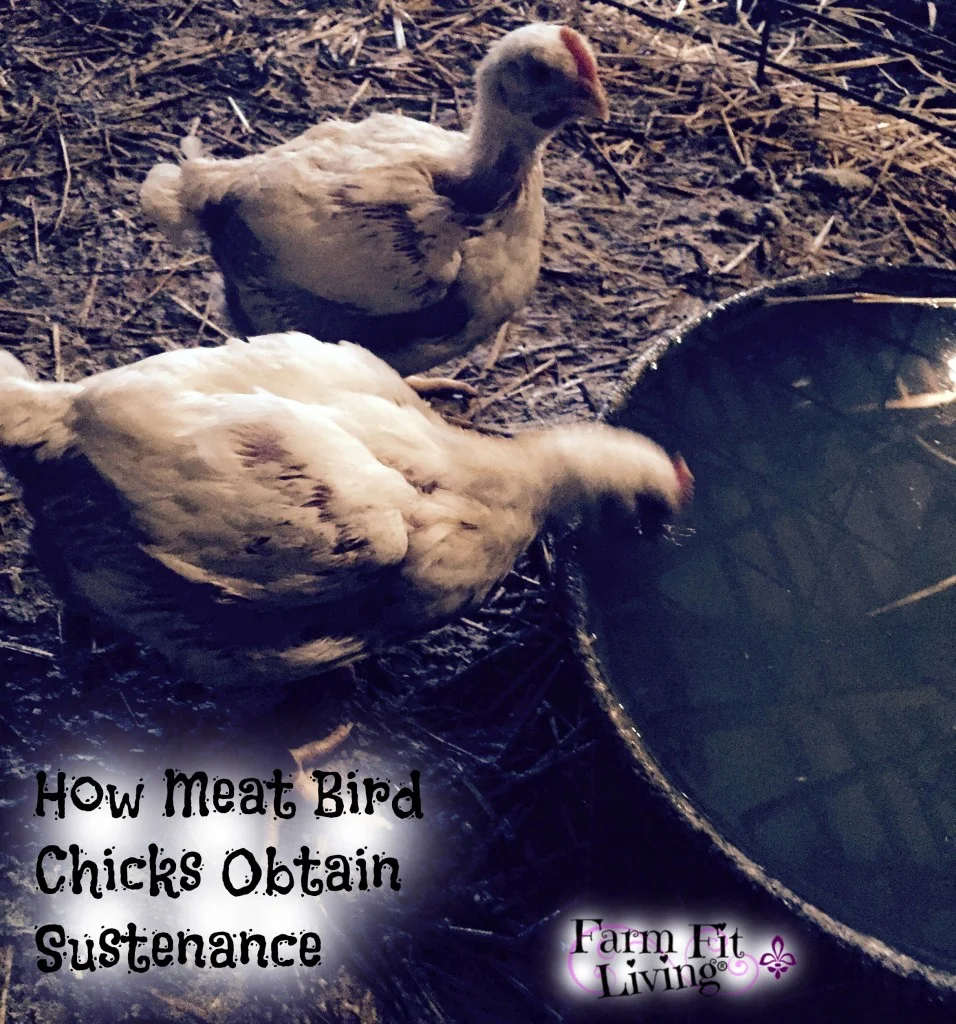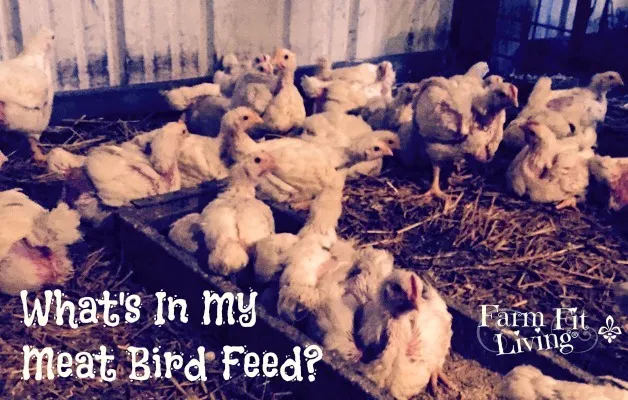Wondering how to feed chickens at any stage of life to help them grow their best?
After many years of raising chickens for both meat and eggs, I’m here to day to tell you all my secrets. But please be aware of my biggest secret.
There’s so many right ways to feed chickens at any stage.
I’m hoping to help you make some decisions today, but I do want you to be aware of this fact. You definitely don’t have to use any medicated chicken feed. You don’t have to use a chick starter. You can make your own rules and it will be ok. But you do need to make sure as a responsible chicken owner that your chickens have what they need.
My goal is to help you understand simply what nutrients chickens need and to give you some of my tips and tricks that you can take with you or leave behind.
So, in this post, I will explain:
- How to feed chickens at various stages of life for their optimum growth.
- Offer you a chicken feeding guide you can opt-in for and print to have on hand to grow your own chickens.
- Some guidance on how much to feed chickens per day to stay within your budget and keep the chickens happy and healthy.
Again, I’m giving you a lot of information today based upon my many years of raising backyard chickens for both meat and egg consumption. I hope this post helps you and please feel free to contact me here for a further chat about this topic.
First of all, Two Types of Chickens to Consider
This decision completely depends on what type of chickens you are wanting to raise.
Chickens for Meat. If you’re raising these, you might be growing out breeds that are faster growing. They’ll also need plenty of protein to turn condition into meat for your freezer.
Chickens for Eggs. The goal here would be to produce great egg layers of yummy tasting eggs. Egg laying chickens not only need protein, but they need calcium and vitamins and minerals as well.
Knowing exactly what you the end production goal will be for your chickens will help you make decisions on which breeds to get and how you’ll want to feed them. Also, knowing this information will help you figure your budget for feed and time spent on raising your chickens before they enter production stages.

Second of all, Three Different Stages
Please note that just like human babies, there are different feeding requirements for different stages of life. And know this can help you make decisions easier as well as keep your budget and time in check.
Newborn – Need a good starter feed.
Grower – Grower rations contain plenty of proteins, vitamins and minerals for growing chickens. I will share a really good one we use, so read on.
Finishing/Production Stage – Finally, this is the break which depends on what type of chicken you have. If you’re raising laying hens, a good laying crumble with calcium is important. If raising meat birds, you can keep them on the high protein grower ration to keep them growing.
Note that Cornish Cross meat bird chicks are finished at 8 weeks on a good grower ration. I’m sharing my feed tag with you down below for what I feed my meat bird Cornish Cross chicks.
Lastly, Two Ways to Feed Them
I definitely don’t want to skip this because I do know that any chicken at any level of production can be free range or fed in a pen. I’ve fed chickens both ways and really the outcome isn’t really that different.
It really depends on your values and opinions. Also the health and safety of the chickens are important to consider.
Here’s just a few pros and cons I’ve found which trying both ways of feeding chickens.
Free Range/Grass Fed
Pros: It’s easy on the budget because you don’t have to buy as much feed (or any). More than likely, they’ll be getting what they need from their ranging. I prefer this method to raising laying hens because they can take anywhere from 17-20 weeks to start production mode.
Cons: You have to watch them more closely to make sure they don’t cross the road (no pun intended) or get attacked by dogs or other wildlife. Another disadvantage is that you may not know exactly what they are eating so the only way to tell if they’re getting what they need is to look at their condition.
I look at feather, skin and weight condition. If I think they are lacking in their nutrition, I will put layer feed in their coop so they can consume what they need.
Containment and Full Feed
Pros: You know exactly what they are getting in the feed. I prefer raising meat birds this way because the Cornish Cross meat birds will reach production mode more quickly. I’ve found that on a good grower ration, meat bird chickens will gain and produce very well. We’ve produced 10-12 pound birds by feeding them an excellent grower ration.
Cons: They will go through more feed, so higher feed costs. Also, space of the pen needs to be considered as well as if they are getting plenty of light. We’ve had our bird pen inside the shed to protect them from predators, but they still need a light on them at all times.
I have also kept young laying hens in pens while growing them until they have started laying and that has worked well. A group of Barred Rock pullets started laying right at 17 weeks and laid all the way through Winter every day.
Really, it doesn’t matter how you raise your birds as long as they will be fed well and safe. You have to know what they need more than anything.
Know What They Need
At this point, you’re probably wondering what they are eating in their diet to help them stay healthy and grow so fast. Well, I’m going to tell you just that.
There’s certain nutrients chickens must have no matter what. The first I’m going to discuss is water.
Water
The #1 nutrient in a chicken’s diet at any stage of life is water. Water is very important to help the chicks stay hydrated and healthy.
And they can’t have too much water available to them at all times. You can set up an automatic waterer that will save you time and allow them to have fresh clean water anytime of day or night.
So, how much water do chickens drink? Well, 50 half-grown Cornish Cross chicks can drink a little more than three gallons per day. That seems like a lot of water, but they are growing birds. Think about how much full grown birds can drink!
Of course, if the birds are eating well, they are going to drink more. They need a complete diet, which contains the right combination of nutrients for them to excel. They need crude protein, vitamins, minerals, and important nutrients such as Calcium, Phosphorus and Salt. If you want to know what’s in a certain feed, you can read a feed tag to see.
How to Read a Feed Tag
This is the Feed Tag that comes on our feed bags for our meat bird grower. It helps us to know what is in the feed so we can adjust their diet accordingly.
As you can see, this grower feed contains 20% Crude Protein. This is a good amount of protein for a growing chick. It also contains local grains and plenty of good vitamins and minerals.
Growing laying hens can be fed the same way or you can just start them on a layer crumble. They need plenty of calcium in their diet, which the layer crumble will provide them. Our feed store provides an excellent layer crumble as well that works great to feed to our growing laying hens.
Most feed stores can replicate any feed tag to produce a good chicken feed using local grains and nutrients. Talk to your nutritionist and see what the two of you can come up with. This can also save you money in the long run than purchasing feed from a commercial farm supply store, such as Tractor Supply.
What is Amprolium?
As you can see, the feed I use as a grower is medicated to help prevent Coccidiosis. Coccidiosis is an awful, contagious protozoa found in the gut of young chickens that kills whole flocks. The best remedy for Coccidiosis is stress prevention because animals always have it. The medication in the chicken feed we use is called Amprolium.
The level of Amprolium in our feed is the lowest level you can feed to chickens. Plus, there is no withdrawal time for Amprolium. It’s not an antibiotic. We won’t have to change feeds as it is safe to consume right away.
I haven’t really had any problems with Coccidiosis but I like having the amprolium in there as a security blanket for my flock.
Major Vitamins, Minerals & Protein
Next, you see the list of main vitamins and minerals. Just as we need minerals and vitamins to make our diets complete, animals do as well.
At the top of that list is Protein. Protein is incredibly important for energy to produce work. In the case of a chicken, he/she is working and expanding energy to convert into delicious meat or eggs for us to eat.
It really does take a lot of energy to be tasty.
Ingredients List
Under the list of protein, vitamins & minerals, you see the list of ingredients. I apologize for the black stain in the middle of the list. I don’t know what that is, but I did not put it there to mess with you.
Corn and soybean meal are the first two ingredients. You see more supplements, oils, nutrients and even some preservatives in there. Propylene glycol is in the feed to help prevent the feed from molding. It is also an energy supplement. I use it a lot if I have a ewe or doe that is suffering from Pregnancy Toxemia.
You may not be able to pronounce many of the ingredients and that may bother you. If you have a question about one, just ask your nutritionist. They are there to help you. Our feed companies go to great lengths to provide the safest food supply for all of the animals we use to feed our families.
My Mistake With Feeding Meat Birds
Mistakes really do happen and I want to tell you about one I made when monitoring meat bird chicks too soon. Meat bird chicks eat fast…too fast. And if they grow too fast, they can in turn have health problems and die sooner. So, a common practice is to remove the feed from the pens at night at three-four weeks old.
When you have chicks on full feed growing, something can happen if you aren’t watching them closely. I want to admit a mistake I made one year when I was trying to monitor the chick’s level of feed intake. I was taking the feed out too early in the evening and two chicks were killed because of it.
They were attacked by the other chicks and pecked to death. It was gruesome.
However, I’ve learned the error of my ways quickly. After monitoring the birds’ food level in the feeders by chore time, I decided to leave the feed in a little bit longer. Just until they were eating everything I was giving them before night fall.
I also want to make sure they are hungry for breakfast. This tells me they ran out of food early into the night.
Therefore, I’m still “technically” taking their food out at night. I’m just trying to make sure they have a little bit to eat in the evening so they don’t turn into cannibals. The amount of feed I’m giving them will level out more as the chicks grow.
What to Feed Chickens Naturally
So, on the other side of the spectrum, you can most definitely just let your chickens out to peck the ground at any stage of life.
Chicks will follow adult chickens and eat what they eat. That is totally a great way to raise and feed chickens. You just need to make sure the chickens are getting the nutrients they need. It’s never a bad idea to just set some complete feed into the coop.
But just know that feeding chickens without commercial feed is completely doable. It’s up to you to make sure your chickens are getting what they need so do watch them closely.
What to feed chickens for organic eggs? There are plenty of complete organic feeds out there. Here’s an example of a great organic feed.
You can also give them organic supplements or treats to add into their diets. But mostly, they are going to find what they need during good seasons. They love pecking the ground for grubs, mites, worms and other grains.
Learning how to feed chickens without buying feed can help save you money for sure. But, I can’t stress enough that they need certain nutrients during times of production.
Know What Chickens Need
I just can’t stress this enough. Yes, you can let chickens free-range naturally. But you have to make sure they are getting what they need to thrive.
You might be asking: “How often should I feed chickens?” Well, you’re in luck. I’m including my broiler chicken feeding guide for feeding meat birds.
8 Week Guide for Feeding Meat Birds Here
This poultry feeding guide includes when to feed backyard chickens and meat bird chickens as well as how much to feed them. Because we all know our money and budget is precious. But our chickens are, too.
I will soon be adding a laying hen feeding guide, stay tuned for that.
Along with that, you should know what not to feed chickens. This short list includes:
- Candy/Junk Food
- Moldy scraps or green potato skins
- Dry Beans
- Citrus
Keeping your chickens’ well balanced requires some responsibility to you. So, I hope you gained some inside and knowledge from this post that will save you money and time when feeding chickens.
~ Much Love ~







3 Things that Must Happen When Chicks Outgrow Their Pen
Friday 30th of March 2018
[…] More Information on Feeding both Meat Chickens and Laying Hens Here […]
Kristin Longacre
Friday 6th of November 2015
Awwww They are so cute!
Mindy Young @ Farm Fit Living
Friday 6th of November 2015
Thank you! :)